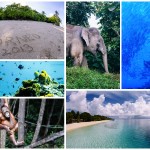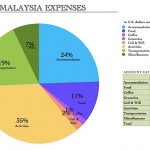It’s been about a week since my first time seeing orangutans at Rasa Ria Resort near Kota Kinabalu, and now I’ve arrived at Sepilok Sanctuary: the main place to see orangutans in this part of the world. It’s about 11 miles from Sandakan on the east coast of Borneo Malaysia.
Entrance is 30MYR ($9 USD) per person and the camera fee is 10MYR ($3 USD). There are two feedings per day, at 10am and 3pm, and you can attend both feedings on the same ticket. There is a direct bus from Sandakan that departs daily around 9am and costs 5MYR ($1.50 USD); it returns later in the day for the same price. Or you can combine this trip with a visit to Labuk Bay Sanctuary for 30MYR ($10 USD) round-trip.
They suggest arriving 30 minutes before the feeding to secure a spot on the viewing platform, as it gets quite crowded. Plus a few orangutans often hang out before the feeding starts.

The jungle around the feeding area is quite lush and set back a bit from the viewing platform.

As the minutes tick by, orangutans emerge from the bush and make their way towards the food. They demonstrate their high wire prowess en route.
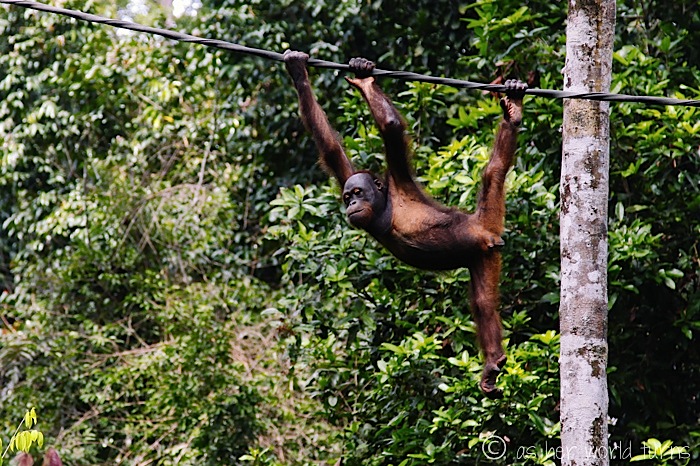
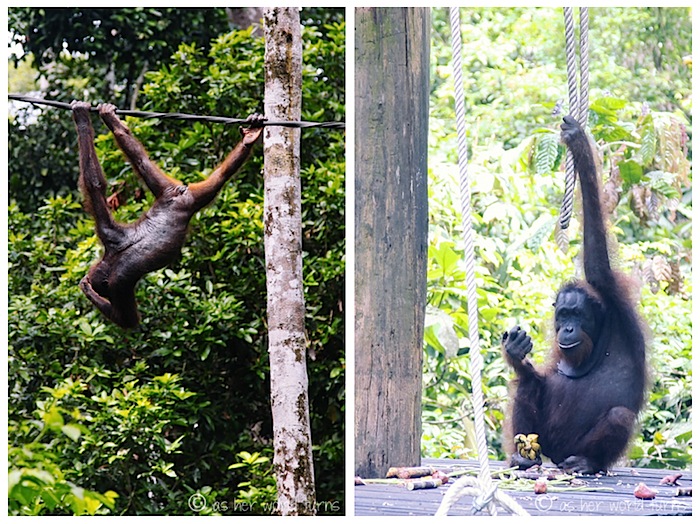
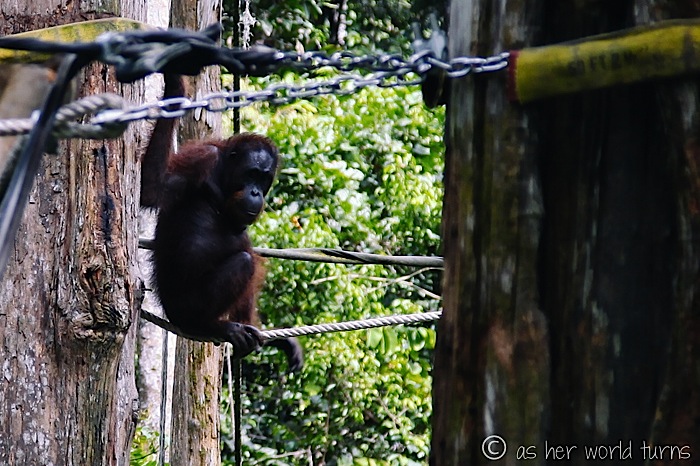
An employee arrives with a bucket of fruit.

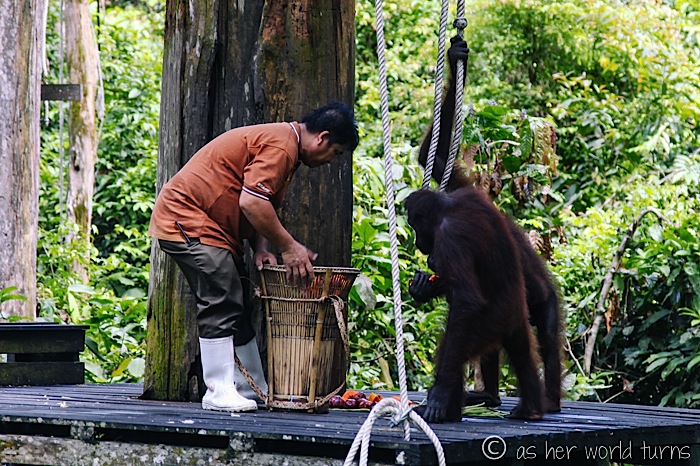
This cheeky guy in the middle reaches out for more after getting his allotment.
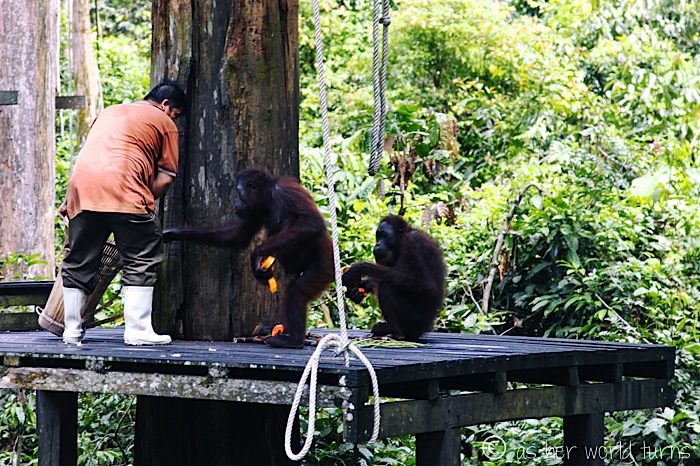
A mother and her baby swing down for brunch.

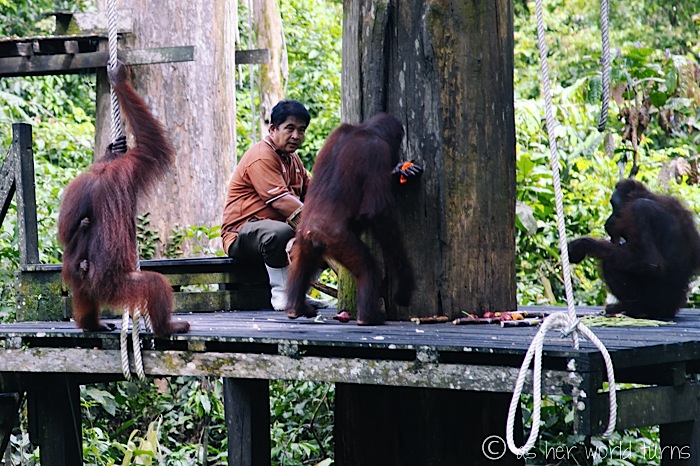
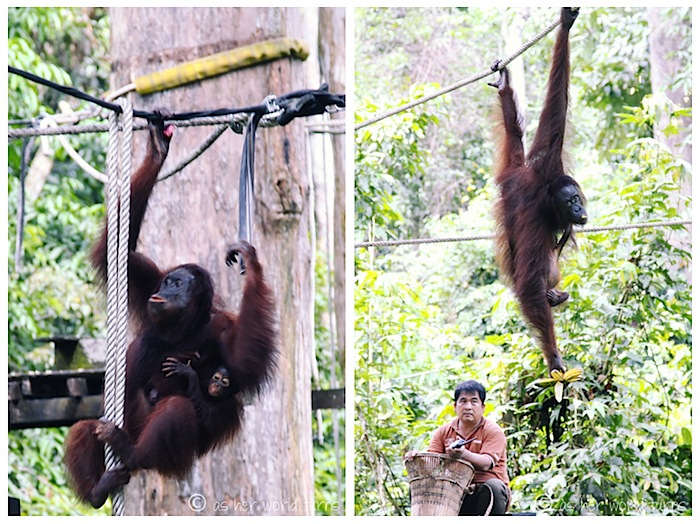
Check out these acrobatic moves:
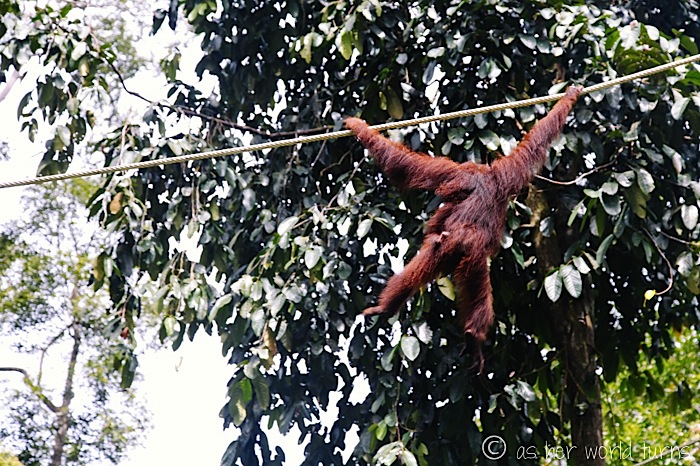
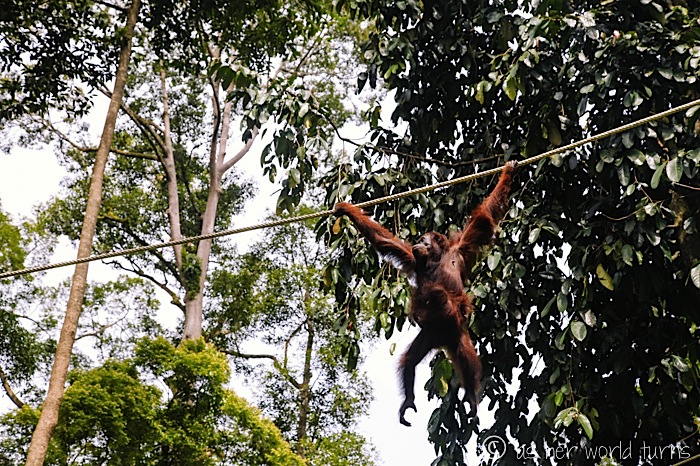

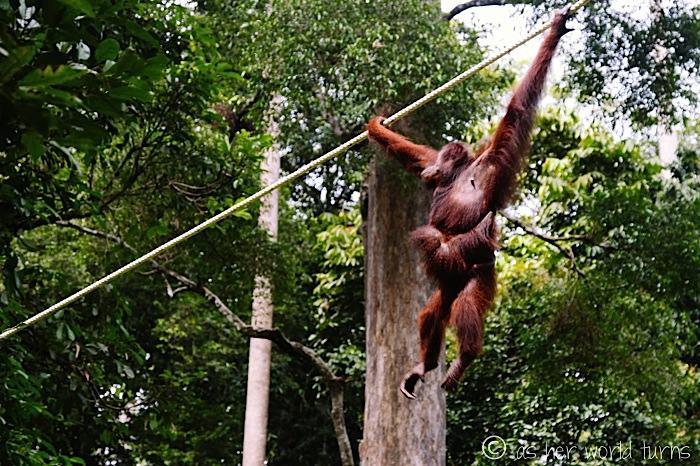
Here’s a GIF to see these moves in action:
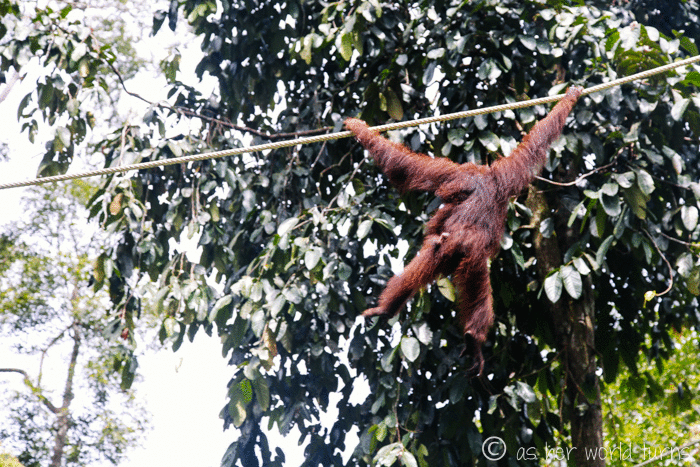
And now an adolescent orangutan approaches for mealtime:

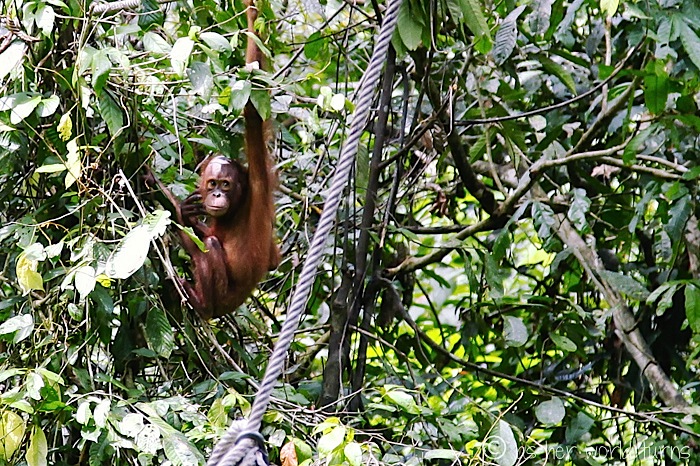
This older orang is happy with his banana bunch:
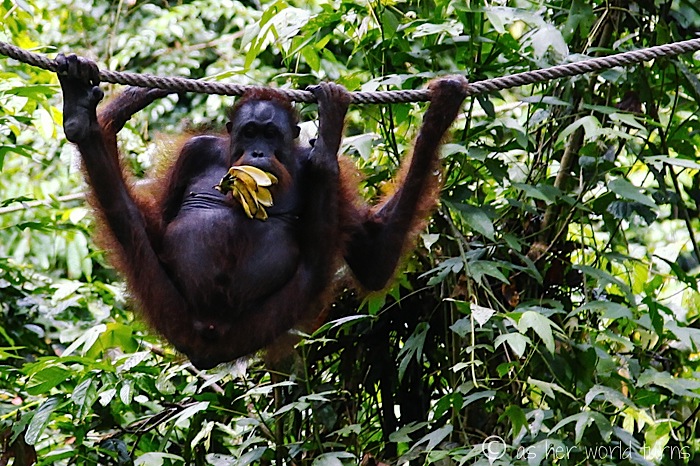

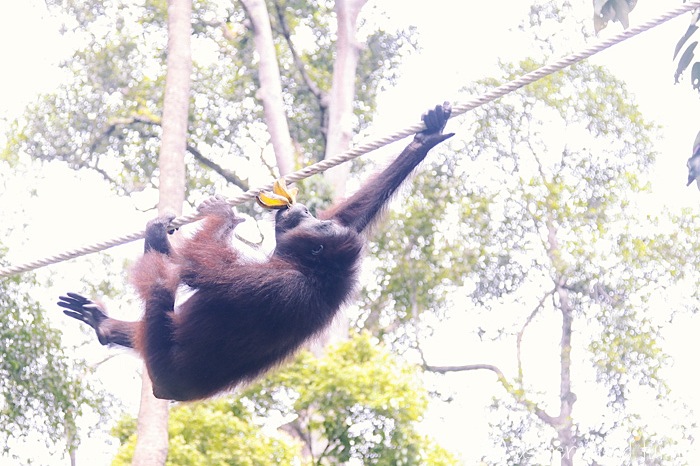

A monkey patiently waits in the trees for his chance at leftovers. Within 30 minutes the orangutans have had their fill and scatter.

Here are some facts about orangutans, as seen on signage around the platform:
- At the age of 6 or 7, orangutans are skilled enough to leave the Sepilok nursery and begin life in the rainforest.
- They will find food themselves and sleep in trees. With reduced human contact, youngsters will observe older orangutans to learn to survive.
- Twice a day, bananas and other fruit are brought to the platform to supplement the orangutans’ diet.
- Sometimes at feedings there are only a few orangutans or none at all, especially during fruiting season. This is a good indication that the orangutans have been successfully rehabilitated.
- There are two species of orangutans: Sumatran (in Indonesia) and Bornean (in Malaysia).
- The orangutan is the only great ape outside of Africa. The three others — gorillas, chimpanzees, and bonobos — are all in Africa. The orangutan color is unique in the ape world, too.
- The orangutan is strictly arboreal, meaning it lives in trees. Other apes do climb and build nests, but they spend much of their time on the ground. This also makes the orangutan the largest tree-living mammal in the world. They build nests to sleep in every day.
- About 98% of our DNA is identical to orangutans.
- The orangutan has the longest childhood dependance on the mother of any wild animal in the world: it nurses for about 6 years.
Soon enough the crowd dissipates. I can’t stay for the afternoon feeding (there’s a 1pm bus to Semporna I plan to catch) so I milk this for all it’s worth. But after another fifteen minutes with zero orangutan sightings — even around the perimeter — I turn to leave.
And on my way out, walking down a long raised platform, I spot a lone orangutan at the other end.
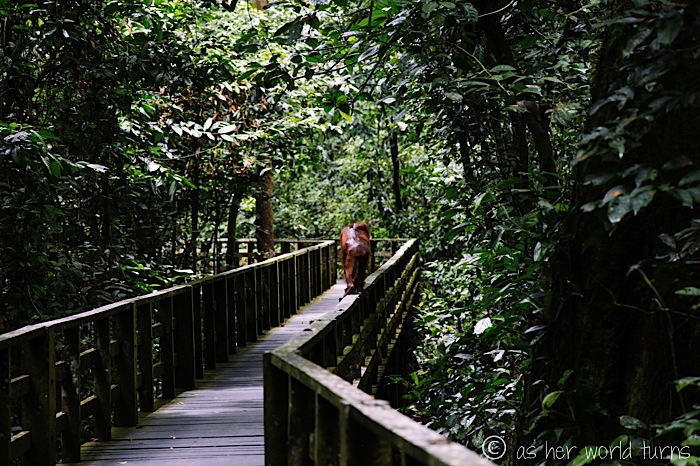
After watching these guys with hundreds of other people, I get a one-on-one experience.
I slowly approach with my camera.
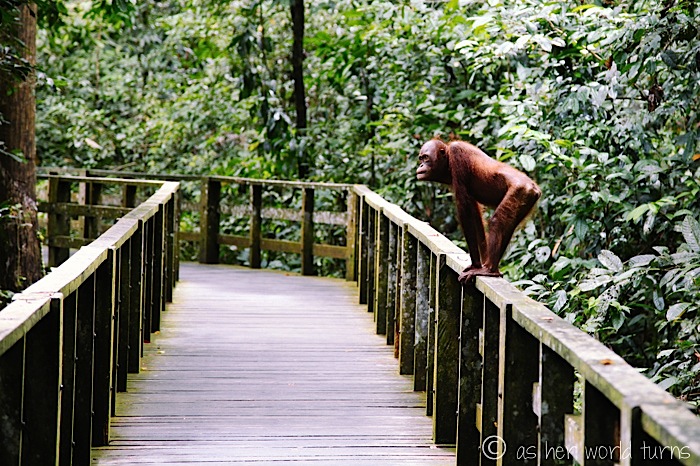
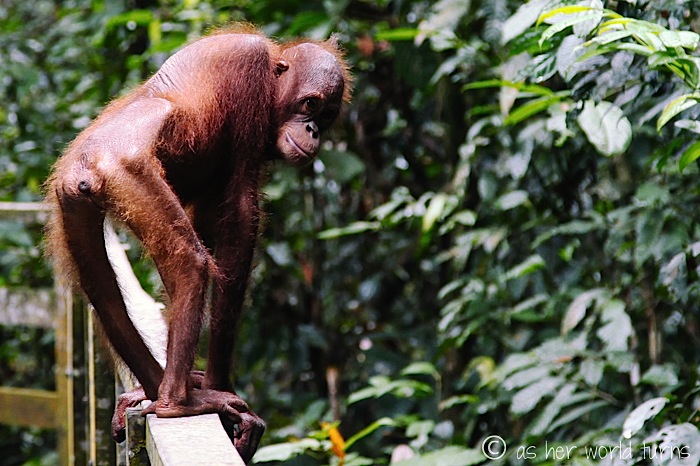
After about two minutes of posing, he climbs off the platform and into a tree.


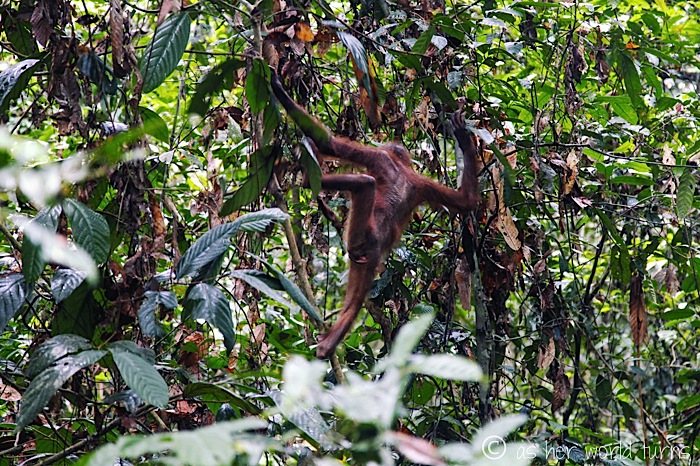
And that was the coolest moment of my day.
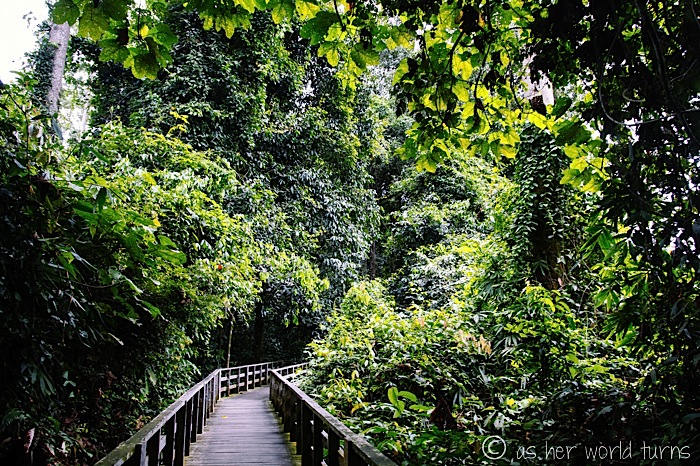
The orangutan experience at Sepilok is great because it offers a variety of orangutans from young to old, and typically a high number of them show up at feedings. But I’m also grateful I saw these creatures at Rasa Ria (even though only two were in attendance and they are all young orphans) because it was a more intimate experience there.
On my way out I run into a fellow photographer with a GIGANTIC lens. I spotted him earlier on the platform and ask about the camera he uses. He’s from the U.K., his name is Tom, and he’s photographed wildlife all over the world and even led several photo expeditions in Africa. SO COOL. He’s staying at a hostel next to Sepilok for about $2 a night and he comes every day at both feeding times to collect an enormous number of images in hopes of snapping a few gems.

His website is Tom Way Photography and you can check out his impressive orangutan photos here. So glad to have met Tom!
This wraps up my time on the far east coast of Borneo. Next I’ll head a little bit south to Semporna to check out the best diving sites in the Celebs Sea.




